|
|
“We are more divided as a nation than ever and are feeling increasingly disillusioned and disempowered.”
Hon. John Anderson | Brendan O’Neill (Spiked Magazine) | Tony Seabrook (PGA) | Janet Albrechtsen (The Australian) | Jennifer Grossman (CEO of the Atlas Society) | Scott Hargreaves (IPA) | Professor Stephen Wilson | Professor Simon Haines (Ramsay Centre for Western Civilization) | Dr. Bella D’abrera | Russell Delroy | Steve Whybrow Sc | Professor Gary Banks | Gemma Tognini | Dan Ryan | Brianna Mckee | Freya Leach | Ron Manners (Mannkal)
Sydney, April 23rd | An evening with Brendan O’Neill (CIS)
Sydney, April 30th | Australia’s Nuclear Future (CIS)
10 out of 10 based on 21 ratings

By Jo Nova
Electric cars and carbon target fantasies are hitting the wall
Right when they are meant to be growing by double digits German EV car sales are down an astonishing 30% compared to a year ago. Their market share is actually shrinking. EV’s are not much good at reducing carbon dioxide over their lifetime but they are very useful for pretending to “decarbonise” the transport sector. So this creates a vast hole in the German government’s so-called transition, which has fixed targets for every sector. Problematically, the transport sector just doesn’t seem to run on wind and solar panels, or pumped hydro. It’s hard to decarbonize. Liquid fuel is just too convenient.
It seems the German Transport Minister is threatening to ban weekend driving as an ambit claim to expose the absurdity of the Green’s position. He is warning that if the Greens don’t sign a change in legislation to average emission across all sectors, he will have to take drastic action to meet the transport sector goals, which means banning driving on weekends. (Trap set.)
The Greens responded like any petty tyrants would, saying he shouldn’t aggravate people unnecessarily, because there were other ways to fix the climate, like forcing everyone to drive slower. (Trap sprung.) The Greens stepped right into it:
“This claim is simply wrong,” Green parliamentary group leader Julia Verlinden told the German Press Agency, referring to Wissing’s threat of a weekend driving ban. She added that Wissing should not aggravate people unnecessarily because there are other ways to tackle climate issues, such as a speed limit. — Politico
Naturally, at the next election, policies that make people drive slower to stop storms 80 years from now will sink like a boat full of burning cars.
Volker Wissing (the Transport Minister) is a member of the Free Democratic Party (FDP) which is theoretically a centre right party. Because the German government is a “traffic light coalition” of three different parties, he needs to work with the Greens to get legislation passed, but he doesn’t have to help them win the next election.
As Pierre Gosselin at NoTricksZone points out the German government are not even close to hitting their EV targets: “The massive sales drop is bad news for the current German socialist-green government, which aims to have 15 million vehicles on the road by 2030. Currently there are just 1.4 million!”
So they’re 13.6 million cars short with only 5 years and 9 months to get there. At the current rate of sales they’re going miss their target by 11 million cars.
Germany’s ambitions to take a leading role in electromobility suffered a severe setback in the first quarter of this year. A significant drop in sales is emerging. Only 31,384 electric vehicles were newly registered in March, a drastic decrease of 28.9 percent compared to the previous year. The collapse in registrations contrasts with the political goals and underlines the gap between political planning and actual market conditions. The challenge lies in whether political measures are effective enough to counter consumer preferences and market dynamics
Electric car shock: market share falls to 11.9% – end of subsidies exposes Germany’s dilemma
The abolition of the electric bonus at the end of 2023 has revealed another problem. The sector’s dependence on government subsidies became visible. This has further exacerbated the crisis of confidence in the electric car market.
And so we arrive at the ugly point where the planned economy meets the real one:
By Šejla Ahmatović Politico, [Translated by Google]
The ruling coalition has been fighting over legislation that sets out binding climate targets.
Germany’s transport minister is threatening to ban driving on weekends to meet climate goals if the ruling coalition does not pass reforms to the Climate Protection Act by July.
A reduction in traffic to help meet the climate goals would only be possible through measures that are difficult to communicate to the public, such as “comprehensive and indefinite driving bans on Saturdays and Sundays,” Wissing added.
All Wissing is asking for is to spread the emissions reductions over other sectors:
The planned amendment to the emissions-reduction law allows climate goals to be reviewed for compliance by looking at all sectors together instead of individually. If the overall target is missed two years in a row, then the federal government is to decide in which sector and with which measures the permitted total amount of carbon dioxide emissions is to be achieved by 2030.
If the planned reforms are not passed through parliament by July 15, Wissing warned, the Ministry for Digital and Transport would be obliged to submit an “immediate action program that ensures compliance with the annual emission levels of the transport sector” until 2030 — which would include a driving ban on weekends.
Wissing has already said the government is not looking to put speed limits on highways. He’d probably quite like it if the Greens adopt that policy at the next election. The Greenpeace mobility expert (as if there is such a thing) is Clara Thompson who said that Wissing was coming up with “horror” scenarios to distract from his own failures. But at least as far as Politico reports it, she didn’t have any suggestions of how to solve electric vehicle nightmares with frozen batteries, slow charging, expensive repairs, car sickness, combustible materials, and holiday hell stories.
h/t John Connor II
10 out of 10 based on 92 ratings
8.7 out of 10 based on 13 ratings
8.2 out of 10 based on 22 ratings
9.4 out of 10 based on 13 ratings
By Jo Nova
Right about now the Greens should be rushing to reverse all the plastic bans
Now we know that CO2 is aerial fertilizer and feeds the world, but this study highlights the crazy unscientific randomness of environmental policies chanted by the same people who say “follow the science”.
It turns out paper shopping bags produce five times as much CO2 over their lifetime as plastic HDPE bags do. Apparently, plastic bags might strangle a turtle, but in the mind of a dedicated Green, paper bags could be causing the sixth mass extinction. Oh the dilemma?
A new study in Environmental Science and Technology looked at 16 applications of plastics in modern life found that in 15 of them, the plastic version produced fewer emissions than the paper, concrete, steel, glass or aluminum sort. And these 16 applications accounted for about 90% of global plastic volume. It seems that with paper bags people often “double bag” their groceries because the bags are prone to breaking, and in the end, in landfill, the paper waste is degraded into methane.
Steven Hayward, Powerline
So we went and banned plastic straws and plastic bags in much of California and elsewhere because they are made from fossil fuels and a solitary turtle was once found snorting fentanyl through a plastic straw, or something. In any case, Greta/Gaia was displeased, so plastic products had to go.
Well guess what: the substitutes for plastic products mostly produce higher greenhouse gas emissions than plastic. Not by just a little but by a lot.
If the Greens gave a toss about CO2 emissions, you’d think they’d be pretty careful to make sure their own plans were not wrecking the planet. And, ipso facto, oops, if they did the wrong thing, you’d think they’d want to fix that like all life on Earth depended it? Unless, of course, they were attention seeking totalitarians who just wanted to boss people around for the sake of it?
This is not the first time studies like these have surfaced. We know from what the EcoWorriers won’t do, that they don’t give a damn about carbon emissions. It’s all a big show of virtue signalling, a grand theatre where they pretend to care, and their friends pretend to be impressed.
Only people who want to fry coral reefs would choose paper bags over plastic ones, eh?
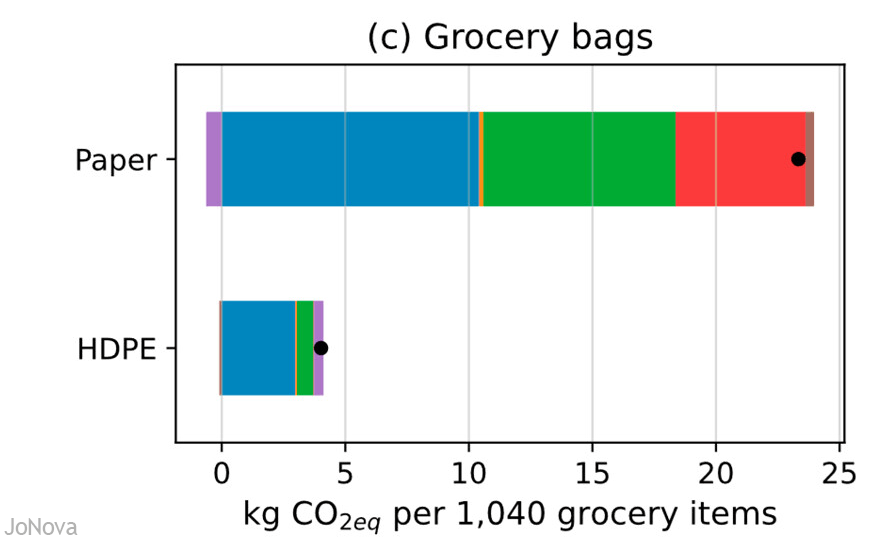

Even though we don’t recycle PET bottles much, they produce one half the emissions of cans, and one third of the emissions of glass:
PET bottles have the lowest emissions impact because of their low weight and low energy intensity during production. In comparison, aluminum cans release twice the emissions of PET bottles, and glass bottles release three times the emissions. PET has the lowest recycling rate (Table S3) among the three alternative containers and the highest emissions when incinerated at end of life (WtE). However, in this case, the production stage dominates the overall emissions, and here, PET has a much lower impact than glass and aluminum (Figure S3).
 https://pubs.acs.org/doi/10.1021/acs.est.3c05191 Could a member of Greenpeace even speak the words? PVC pipes are better for climate change (if you care about CO2):
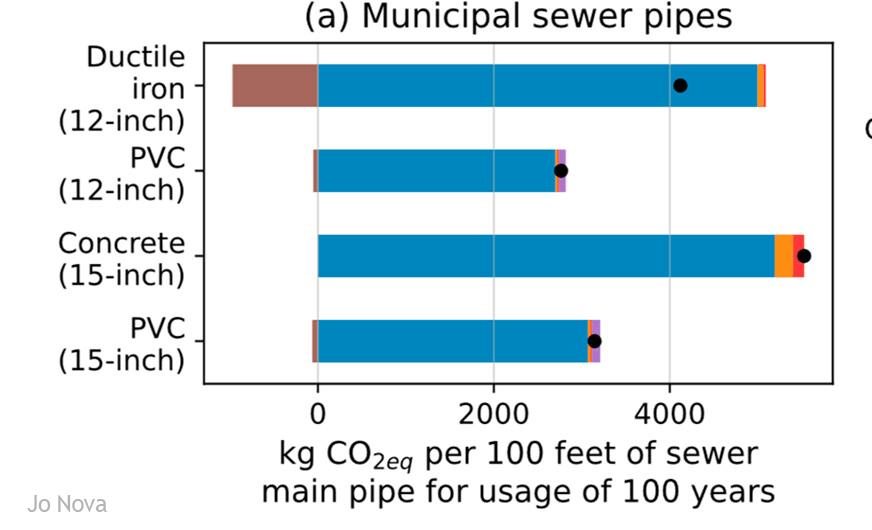
Pet food in tins produces three times the emissions of pet food in little plastic pouch things:
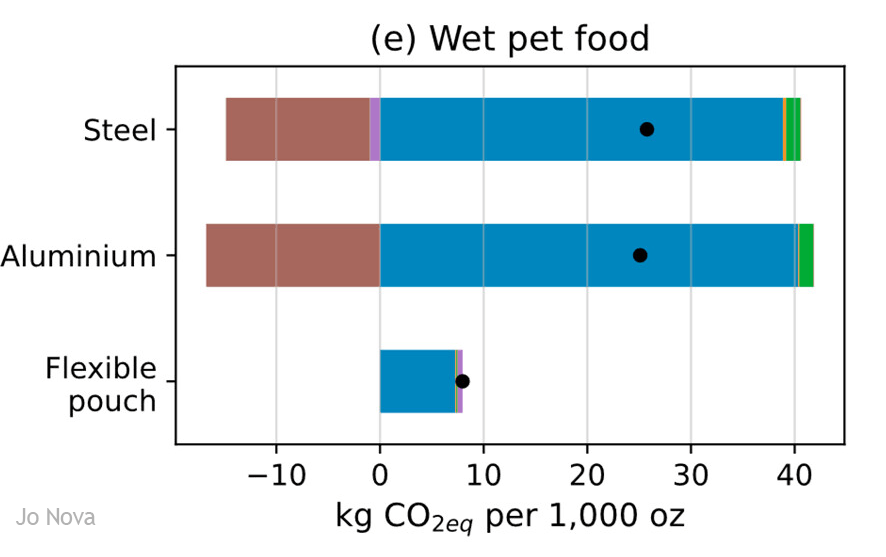
Even plastic milk bottles produce less emissions than cartons do, and every little bit matters as they say:
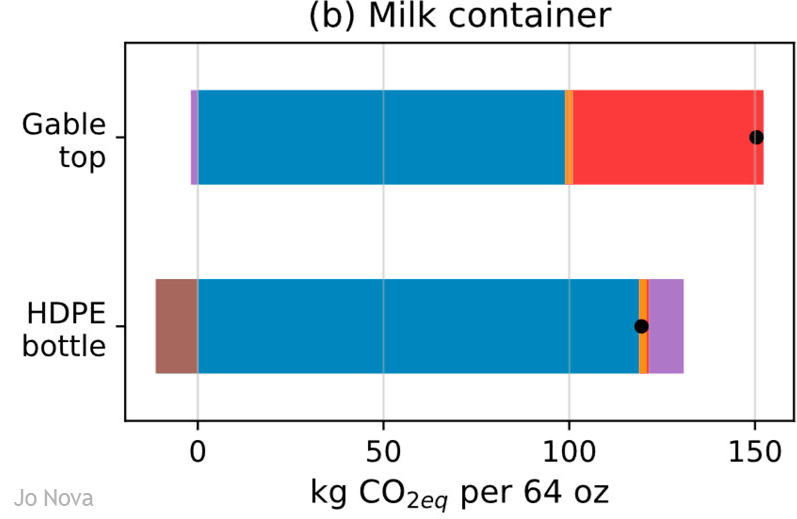
Obviously Greens will be bragging about the plastic fuel tank in their hybrid cars, right?
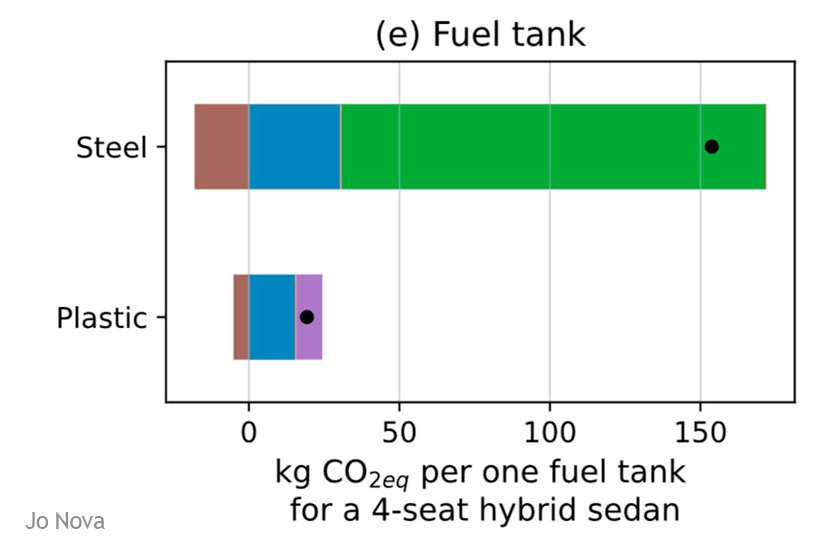
…and their acrylic carpet. Save the whales, buy linoleum?
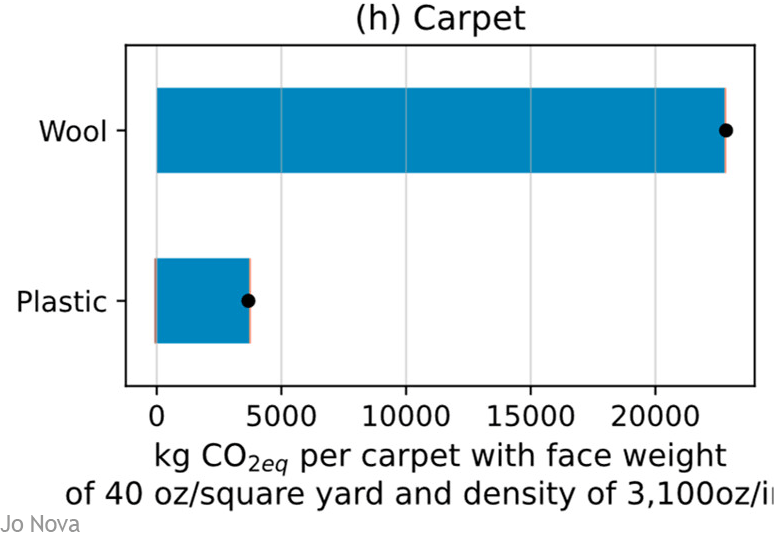
The whole study finds virtually no reason to swap plastic goods for something else:
We conclude that applying material substitution strategies to plastics never really makes sense. This is because plastics’ inherent properties─strong, lightweight, easy to shape, customizable, and comparatively low-GHG emissions─make it the preferred material for minimizing emissions across most products.
h/t Bally
REFERENCE
-
Fanran Meng, Miguel Brandão, and Jonathan M Cullen
Environmental Science & Technology 2024 58 (6), 2716-2727
DOI: 10.1021/acs.est.3c05191
9.9 out of 10 based on 81 ratings
8.7 out of 10 based on 7 ratings

By Jo Nova
Politicians are supposed to care about the voters, but trillions are being spent on a issue that voters don’t give a toss about. Who are politicians serving exactly, because it isn’t the voters. There is no grassroots clamoring demand for “climate action” and there never was. Could it be that politicians are more worried about what the banker cartel think, and the media moguls, or President Xi, or are they just carving out a post-political job for themselves at the UNEP or the WEF?
The Wall Street Journal reports on a survey that shows even young voters know almost anything is more important than climate change.
By Amrith Ramkumar and Andrew Restuccia,Wall Street Journal
A Journal poll, which surveyed voters in seven swing states in March, found that just 3% of 18-to-34-year-old voters named climate change as their top issue, with most citing the economy, inflation or immigration. That is roughly in line with voters of all ages, 2% of whom cited climate change as their top issue.
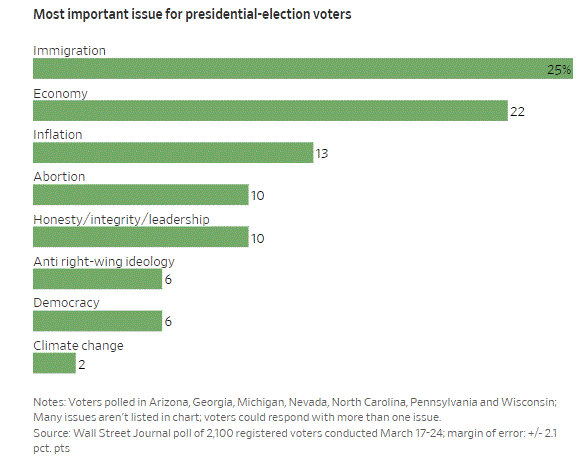
This has been this way for years. In 2015 only 3% of US voters thought climate was the most important issue.
And let’s not forget all these surveys are done on people who never see a skeptical expert on TV or a real documentary (like Climate: The Movie). They don’t hear that carbon dioxide was higher for most of the last half billion years, or that “climate change” causes record grain yields, and saves 166,000 lives a year. Most of the 18 to 35 year olds have been fed the climate diatribe from school — but even they don’t believe it. If they thought the Antarctic icecap was really about to collapse, they’d rate climate change up there with inflation.
Given the vapor thin faith of the young and impressionable, the whole climate charade is a house of cards. One good opposition leader just has to point out the costs and start the debate and it’s over. Everyone wants to change the climate until the moment they have to pay for it.
A survey from the Climate Communications unit at Yale suggests the climate gravy-train isn’t buying votes either. 55% of US voters don’t think the trillion dollar Inflation Reduction Act will improve their health. Two thirds don’t think it will help their family. 54% of voters don’t think it will help their children or grandchildren.
If you were a politician trying to win votes, this is not how you’d spend a trillion dollars.
Fewer than half of registered voters think the Inflation Reduction Act (IRA) will help them or the country.
-
-
- Future generations of people: 46% of registered voters; 78% of liberal Democrats, 67% of moderate/conservative Democrats, 30% of liberal/moderate Republicans, and 14% of conservative Republicans.
- The health of Americans: 45% of registered voters
- Low-income communities and communities of color who are disproportionately harmed by pollution: 40% of registered voters;
- The economy and jobs in the U.S.: 38% of registered voters
- Their family: 33% of registered voters
- Them personally: 30% of registered voters
- National security: 20% of registered voters
And therein lies the grand mystery of democracy. We basically have a giant government industry spending a trillion dollars on an issue people don’t care about and in ways that most voters don’t think will help them, their children, the poor, the economy, jobs or national security. And yet the money flows. Why is that?
Just ask “Who Benefits?”
So the good news that the young can see through this, despite the wall of propaganda.
The bad, awful and terrible news is that the government doesn’t care what the voters think.
h/t Peter
Image by Meranda D from Pixabay
10 out of 10 based on 109 ratings
9.4 out of 10 based on 7 ratings
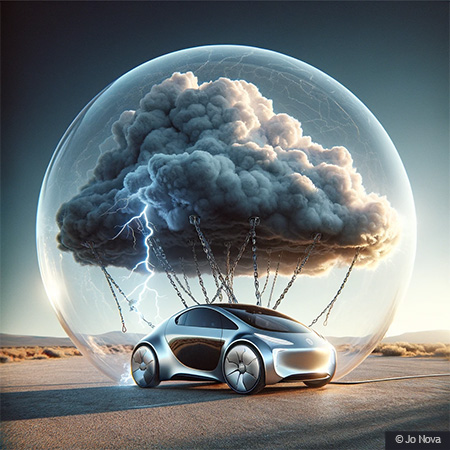
By Jo Nova
It’s just another day in the death of the early 21st Century EV bubble
The fantasy of battery powered vehicles that also fix the weather was foisted upon the people by Big Government. But all the regulatory wands in the world, and even billions in free gifts don’t make a market appear when the product is a dog.
EV’s are meant to be storming the market on their way to domination. But in the UK the market share of EV’s rose only 3.8% last month but the whole car market grew by 10% — so EV’s are in danger of becoming a shrinking part of the UK car fleet. Plug-in hybrids saw a 37% increase.
The EV experiment has gone so very wrong. Last year Ford was the number 2 EV brand in the US, but it was hit with the $4.5 billion dollar black hole of fiscal carnage, losing $38,000 on every single EV. Obviously, something had to change, and now months later, Ford is abandoning plans to bring in two new EV models, and retool their EV manufacturing plants. Instead, it is shifting to hybrid vehicles — copying the Toyota plan.
David Blackmom, The Telegraph
Something big is happening in the US market for battery electric vehicles (EVs), and it isn’t positive for the industry that makes them, or for the Biden administration’s subsidised dreams.
Ford suddenly puts the brakes on EV models, and factories, and is copying Toyota which was mocked and ridiculed for focusing on hybrids instead of the purist EV’s:
…on April 4, Ford Motor Company put the icing on this cake of electric carnage with an announcement that it is pulling back from plans to introduce two new EV models, an SUV and another pickup to tag along with the F-150 Lightning, and delaying major investments in building and “retooling” EV manufacturing plants in the US and Canada.
Ford says that after three years of making massive investments in new plant and equipment needed for the production of its F-150 Lightning and electric Mustang Mach E models, it will now focus on developing hybrid options across its entire model lineup. This places Ford on a strategic path similar to Japanese giant Toyota, which has become an object of scorn and ridicule from the climate alarmist left and globalist policymakers in the US and Europe for its stubborn, ongoing focus on making and successfully selling hybrids rather than pure EVs.
Meanwhile Fisker, a new EV startup, is pausing production for three weeks, and is on the verge of bankruptcy. Things are so desperate they have dropped the price of the “Ocean Extreme” from £58,000 to £44,000 in the hope of staving off the grim reaper. Not surprisingly, after sales support is “not guaranteed”.
Resistance is growing downunder
The Guardian is still giving free adverts for EVs and pretending its news. They report that there are now 180,000 EV’s in the Australian market, but don’t mention that that is a mere 1% of the total car fleet.
In Australia the EV market is in its infancy, but people already seem to realize “they catch fire” a lot. In the driest continent with the lowest population density and most expensive electricity on Earth, range anxiety and fear of fire is real thing. Far from being excited about being offered low emissions cars, there are signs from middle Australia that the people are unimpressed already.
Dissent is so strong, people in Strata-title buildings have to struggle for 12 months to even get one EV installer added to the building. And when they do succeed the charging spot is often placed in the furthest part of the carpark, out in the garden, lest it combust. One contractor has quoted to install an EV charging outlet on 100 buildings but only two have taken the job up. “Resistance is growing” he says:
It has taken somewhere near 12 months — 3 Body Corporate Committee meetings, dozens of emails, an Extraordinary General Meeting and an Annual General Meeting to get to this stage — a single 10amp GPO.
To date, he has quoted to install the electrical backbone infrastructure in over 100 buildings. It works out at roughly AU$1000 per parking bay. Only two buildings have taken up the quotes. He believes that body corporates are looking for more reasons to resist the change. “There appear to be more and more rules and regulations,” he says.
“In apartment blocks there are so many people to deal with: committees; on site management. I think the resistance is growing. Some are using fire risk as a means to stop installs. Quotes have become more expensive and more complex as I have had to add fire extinguishers, smoke detectors, fire blankets and a stop/start button. Safe EV training has to be provided for those responsible in the building. More work, more cost.”
And the unsold cars pile up in the US:
10 out of 10 based on 94 ratings
9.3 out of 10 based on 9 ratings

By Jo Nova
 … Dear Australians, people are sneaking into your house and stealing your money every year. You may have no idea because the theft comes in one thousand little instances, hidden within labels like “electricity bill”, “peas” and “soccer fees”. It’s also hidden in your income tax. Pagan fantasy plans to stop storms and hold back the tide are being funded by you, whether you like it or not.
Solar panel installations are partly paid for by their neighbors who don’t have solar panels, it’s hidden in their electricity bills. When a wind farm is built out past the Black Stump, shareholders of the wind farm don’t pay for the high voltage line to connect themselves to the grid, you do. When the new unreliable generators wipe out the midday profits from the old reliable plants, the old essential plants still have to pay their capital costs, insurance and staff. So they just have to charge more for the hours they do run. The new vandal plants make the old reliable ones more expensive than they would have been. (See Stacy and Taylor) You pay that bill too.
When the soccer club pays higher electricity charges for the night lights they pass that on to your eight year olds club fees. And so on and so forth for the peas, the cheese, the ham and everything that’s heated or cooled or moved in the supermarket.
If a government official knocked on your front door and demanded the “Climate-changing-cash” in a single payment, there would be hell to pay. Alan Moran has added up the numbers and it works out to $15.6 billion a year in Australia, and that’s about $600 per man, woman, and child.
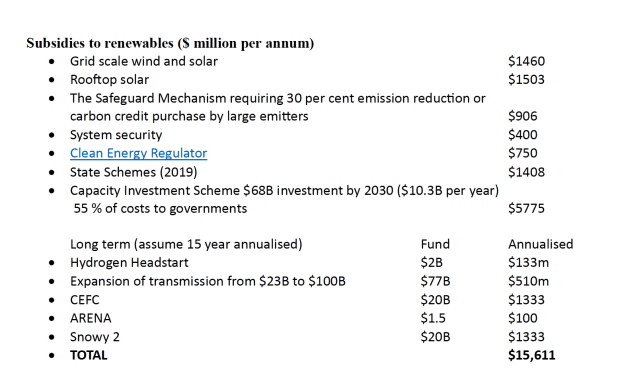
So lets have a referendum on whether we should be trying to change the weather. Let’s ask the people if they would rather have cheap electricity and a trip to Bali, or knock 0.0 degrees C off global temperatures in 2100AD? Would they rather buy a new fridge or pretend they can reduce the floods coming in one hundred years time?
We know 98% of the public say they “believe” in climate change, but we also know the renewables industry will never ever campaign for a referendum to ask what the people want. They know, we know, and the politicians know — the people don’t want to buy “the transition”.
Burglar image by Sammy-Sander from Pixabay | Thieves online image by Hyperslower from Pixabay
10 out of 10 based on 107 ratings
9.1 out of 10 based on 13 ratings
By Jo Nova
There is such a glut in solar panels, the Financial Times reported that people in Germany and the Netherlands are using them as cheap garden fencing, even though the angle is not good for catching the sun. Though given that there is also a glut of solar power at lunchtime this is probably a “good” thing.
Great time for the Australian Government to spend a billion dollars setting up a giant solar panel production industry, eh?
With exquisite timing the Australian Labor government has just announced a Solar Sunshot for Our Regions. It our Prime Ministers ambition for us to be a “Renewable Energy Superpower” twenty years too late. One third of homes in Australia already have solar panels, but only 1% were made here. The NSW State government will also lob $275 million to support the embryonic industry and workers, most of whom will presumably be doorknocking to give away the panels with lamingtons. After we finish building garden fences, we might be using them to build sheds and cubby houses.
The big solar rush is over…
The global frenzy to install solar panels has suddenly flattened out last year when it was supposed to be launching for orbit. The IEA estimated the world now has about 800 GW of solar panel plants. But demand for solar panels this year is only expected to be 402GW. The glut is so bad, the whole global solar panel industry could take half the year off to play golf and no one would notice.
In the media, everyone is saying “China has flooded the market”, but for some reason, no one wants to mention that the demand curve has suddenly slowed. The CCP has bet big on renewables sales and was probably expecting that rapidly rising curve to take off. Instead as interest rate rises clamped down on “luxury” spending people ditched their plans to install solar PV.
The glut should be no surprise to any investor. The over supply has been recognised since January. And any serious investor in solar PV would know that solar stocks around the world were down 40% in the first three quarters of last year. The Australian Prime Minister has a whole team of researchers and Ministers and none of them have even hired a high schooler to google the news on the solar industry?
Huileng Tan, Business Insider
China’s manufacturers are pumping out so many solar panels that the resulting global glut has caused prices to tank.
Solar panels are typically installed on rooftops, where they can capture the most sunlight — but there’s so much excess supply that some people are putting them on fences. This also saves on pricey labor and scaffolding costs required for roof installations, FT reported.
Fences covered in solar panels are also starting to take off in the UK, North America, and Australia.
Solar-panel supply globally is forecast to reach 1,100 gigawatts by the end of this year — three times more than demand, the International Energy Agency wrote in a report released in January.
If China makes 80% of the worlds solar panels, and if solar energy is so cheap and efficient, why doesn’t China just keep those panels and use them itself?
10 out of 10 based on 98 ratings
8.9 out of 10 based on 15 ratings
8.4 out of 10 based on 27 ratings
8.5 out of 10 based on 28 ratings
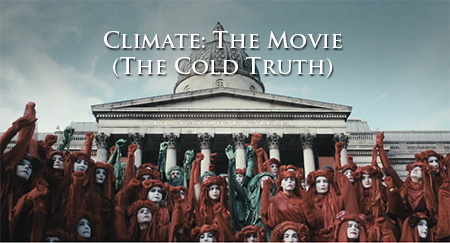 I have heard ADH TV has permission to show Climate: The Movie in full at 9pm (Sydney time) tonight. This is a rare chance to send the link to friends and introduce them both to alternative media outlets as well as a rare professional old fashioned documentary done with class. As I said, this is perfect for the curious, matter-of-fact mind. It’s not angry or activist, so it’s easy to share. I have heard ADH TV has permission to show Climate: The Movie in full at 9pm (Sydney time) tonight. This is a rare chance to send the link to friends and introduce them both to alternative media outlets as well as a rare professional old fashioned documentary done with class. As I said, this is perfect for the curious, matter-of-fact mind. It’s not angry or activist, so it’s easy to share.
You can help in the information war…
UPDATE: The specific link to Climate: The Movie
9.8 out of 10 based on 84 ratings
By Jo Nova
This tells us everything we need to know about modern Western civilization. A blimp with wings.
These pufferfish of the sky could be the ugliest, most absurd planes to take to the troposphere.
They are emblematic of the era we live in. Wind turbines destined to rot in the ocean are so big now they can’t even fit on a truck, so someone is planning a plane specially for them. It will be 100 feet longer than a Jumbo jet but carry no tourists, except the fibreglass kind that torment whales, deafen porpoises and vandalize fine electricity grids. The whole point of these machines is a quest to appease the weather Gods one hundred years from now.
Presumably these will run on fairy dust or fermented tofu.

The Flying white elephants could “hit the sky” in four years
To be clear, all that was announced two weeks ago was that Radia has “plans” to make these aircraft and wants $300 million dollars. Presumably the photos here were made by ChatGPT or equivalent.
by Rizwan Choudry, Interesting Engineering
The WindRunner’s colossal dimensions dwarf even the most iconic commercial aircraft. Measuring an astounding 356 feet long, with a height of 79 feet and a wingspan of 261 feet, it outstrips the Boeing 747-8’s length by 106 feet. To put things in perspective, the Windrunner is almost as long as an NFL football field. Its exceptional size translates to a vast carrying capacity of up to 80 tons – twelve times that of the Boeing 747.
Correction: The Business Insider says:
Radia’s plane has a cargo bay volume of 272,000 cubic feet — 12 times that of a Boeing 747-400F …
Let’s not forget the sole aim and purpose of the plane, the factories that make it, and the entire load it carries is to reduce human fossil fuel use.
 … According to Olivia Murray of American Thinker, it will supposedly run on renewable fuel:
Radia promises that this plane will run on “sustainable aviation fuel” instead of traditional jet fuel—but what is SAF exactly? Well, SAF is just a type of “biofuel” that has apparently met certain criteria to be legally-labeled as “sustainable.” So, just as long as you ignore all the cleared forests and prairies to make way for the taxpayer-subsidized corn and soy enterprises to grow the product to make the “fuel,” and you ignore the devastation caused by corporate (mono)agriculture, then maybe you can delude yourself into believing this is a more environmentally-friendly option.
SAF is “sustainable” in the same way that wind turbines are sustainable—you have to ignore the impact on migratory birds, the petroleum-based resins used to manufacture the fiberglass blades, the toxic refrigerants in the turbine house, the petroleum-based lubricants for the machinery, etc., if you’re to believe the lie.
They could always run it on solar power and electric batteries if they don’t mind replacing the battery every three weeks (or maybe every time it flies).
 The Windrunner is 127 feet longer than a 747. The plane will apparently need 6,000 foot runways to take off and land.
Radia hope that onshore turbines will also be delivered to far flung and remote sites where it is hard to deliver wind turbine parts now. (Since those sites are often mountainous and lacking in long international airport runways, who knows, perhaps the blades can be air-dropped?)
UPDATE: The Wall Street Journal says they will have to build a new dirt runway for each project.
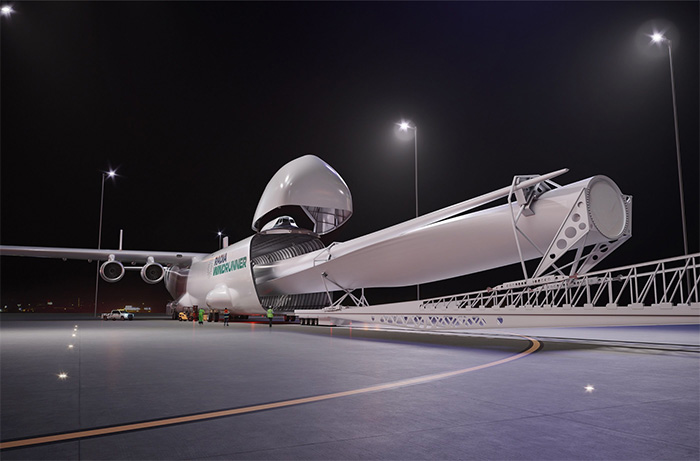 … Having waited seven years to reveal their plans they may have missed the renewable bubble by six months. Bad luck eh?
Investors are fleeing after Siemens discovered that instead of being more efficient, the bigger blades were a maintenance nightmare. Even insurance companies are balking at paying for all the cable breaks.
h/t Bally
9.8 out of 10 based on 77 ratings
9.4 out of 10 based on 14 ratings
|
JoNova A science presenter, writer, speaker & former TV host; author of The Skeptic's Handbook (over 200,000 copies distributed & available in 15 languages).

Jo appreciates your support to help her keep doing what she does. This blog is funded by donations. Thanks!


 Follow Jo's Tweets
Follow Jo's Tweets To report "lost" comments or defamatory and offensive remarks, email the moderators at: support AT joannenova.com.au
Statistics
The nerds have the numbers on precious metals investments on the ASX
|
















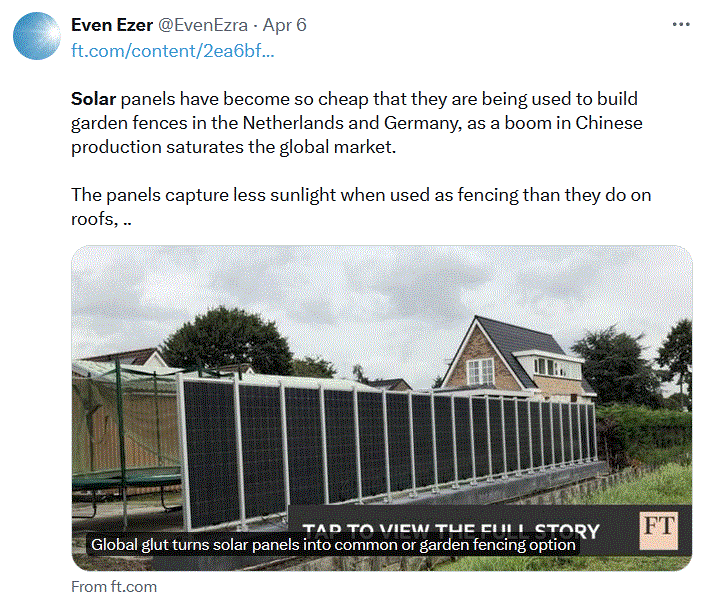
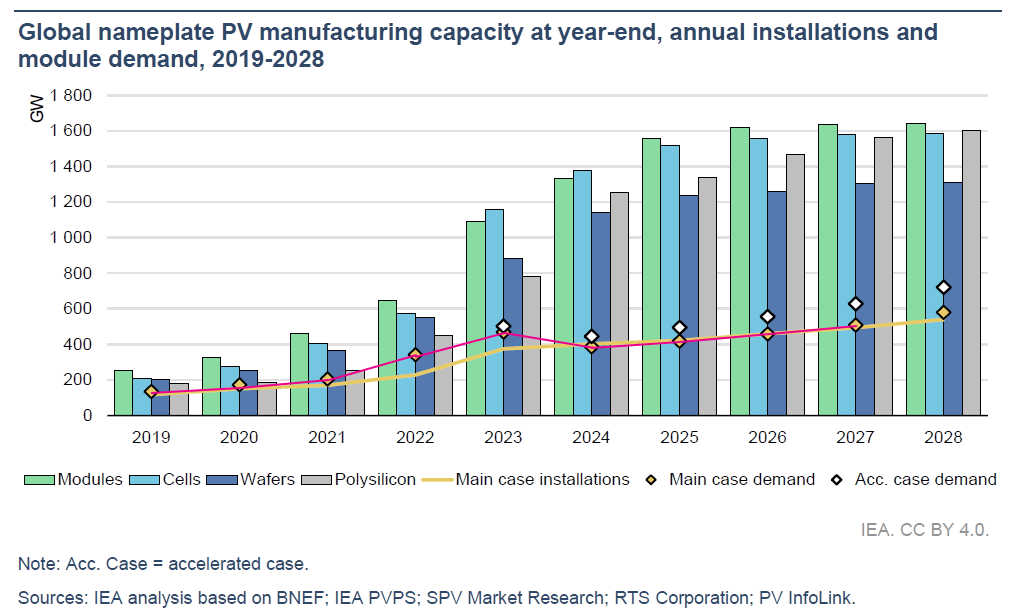
















Recent Comments